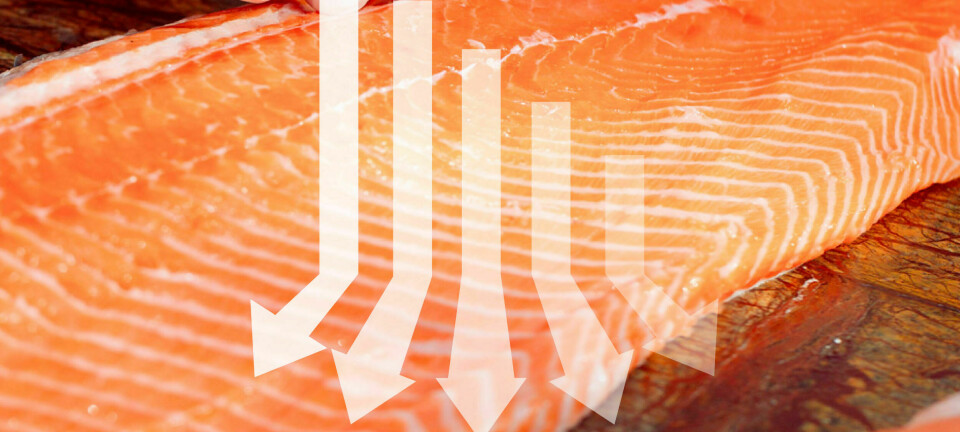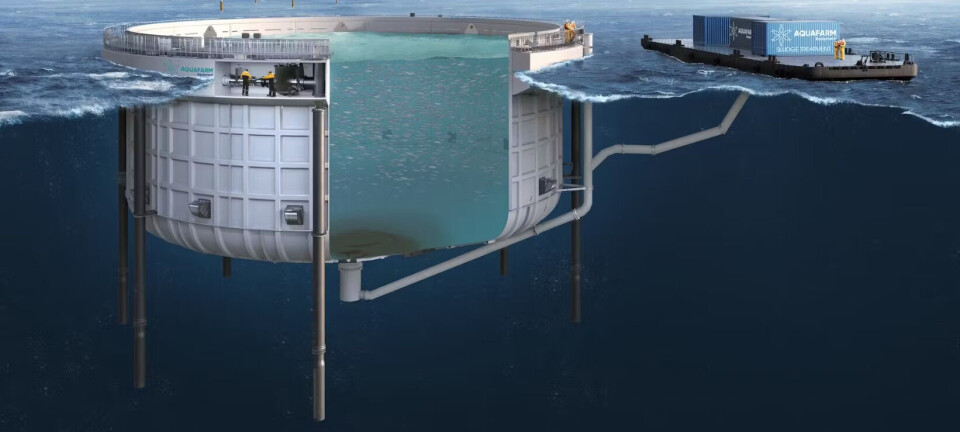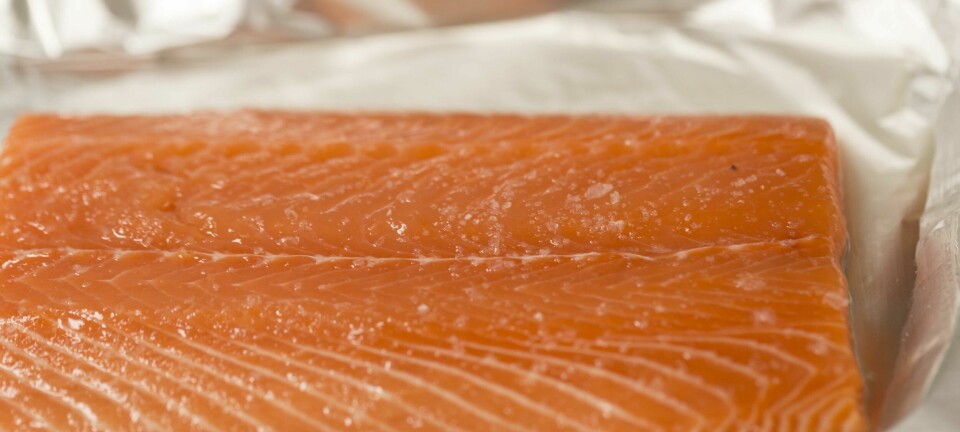Results show the potential of lumpfish in controlling sea lice infestations on Atlantic salmon.
This component of research is an integral part of the NRF funded project: Rognkjeks som biologisk avslusingsmetode for oppdrettslaks i Nord Norge (Project number 208614/S40).
PATRICK REYNOLDS; GERHARD ELIASSEN: GILDESKÅL FORSKNINGSSTASJON. TOR ANDERS ELVERGÅRD: NORDLAKS AS. THOR ARNE HANGSTAD; ATLE FOSS; ERIK VIKINGSTAD and ALBERT K. IMSLAND: AKVAPLAN NIVA.pat.reynolds@gifas.no
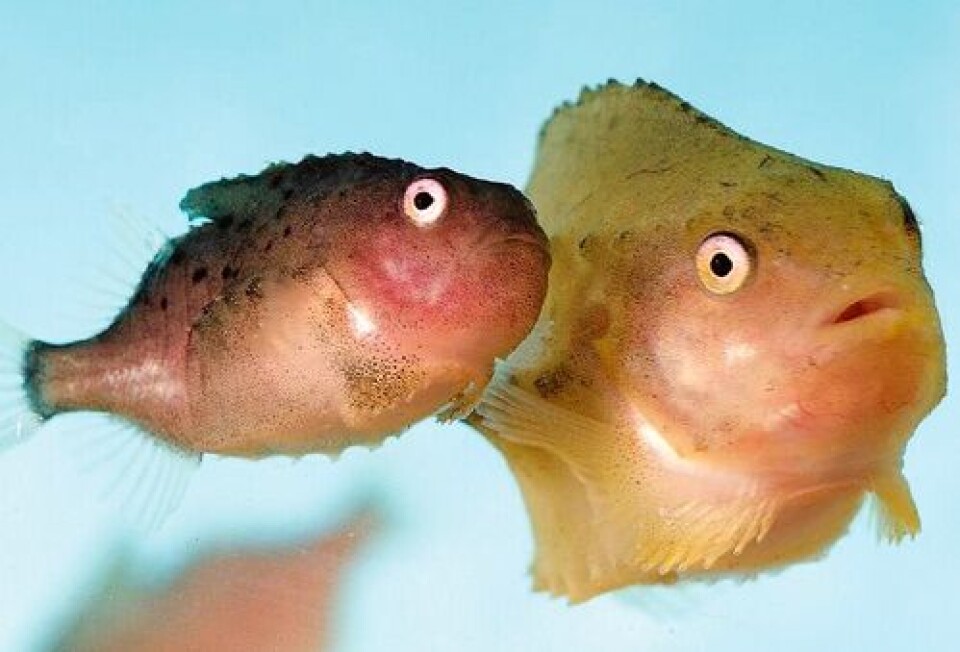
Infestations by the salmon louse, Lepeophtheirus salmonis Krøyer, is a major fish health problem facing the Atlantic salmon industry, impacting on the economy of fish farmers due to costly treatment procedures, reduced growth, increased feed wastage and reduced market quality of the final product. The aquaculture industry has for many years relied heavily upon the use of chemotherapeutic treatments. However, available sea lice medications are limited, and their continuous and frequent use can potentially lead to the development of resistance in lice. Accordingly, a cost-effective and environmentally sustainable alternative to chemotherapeutic treatments is an urgent priority for the aquaculture industry. The biological control of sea lice through the use of “cleaner fish” has recently become a feasible alternative due to the increased occurrence of resistant lice, the reduced public acceptance of chemotherapeutic use in food production and the urgent need for an effective and sustainable method of parasite control in Atlantic salmon. Currently, some farms are using wrasse species to aid in the control of sea lice. However, the wrasse species currently in use are temperature sensitive, making them unfit for use under low temperatures, less than 6 °C. As a cold-water alternative, the common lumpfish has been suggested. However, no published work exists describing the use of lumpfish as a biological delouser, despite the fact that such a practice would most likely lead to major economic gains through improved growth and quality of slaughtered fish. The aim of this study was to assess the grazing potential of lumpfish on the different life stages of sea lice found on Atlantic salmon in open net pens.
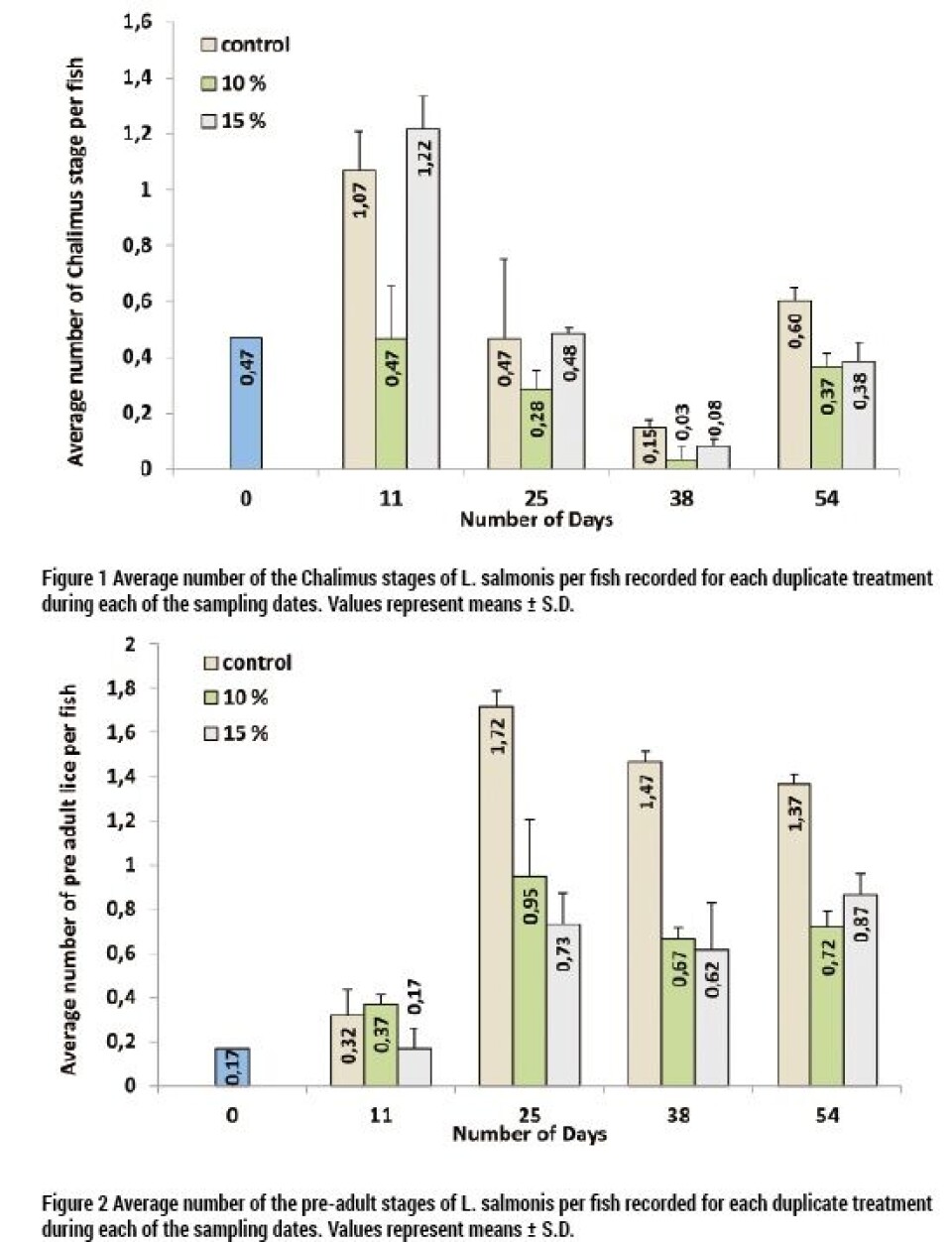
Methods To assess the efficacy of lumpfish grazing on attached sea lice on Atlantic salmon, six small-scale sea cages (5 × 5 × 5 m) were each stocked with 120 Atlantic salmon with a mean ± SD weight of 619 ± 49 g. Two of the cages were further stocked with 12 lumpfish (10% density) and two with 18 lumpfish (15% density) with a mean ± SD weight of 54.0 ± 7.2 g. Two cages without lumpfish acted as controls. At the start of the trial, a lice count was undertaken as the fish were transferred into the trial cages and at two weekly intervals throughout the study period. Fort each count, thirty fish were sedated, and any lice present were recorded. After counting was complete, any lice remaining in the container were also recorded. Lice were registered in 4 categories: 1. L. salmonis: adult female 2. L. salmonis: adult male 3. L. salmonis: pre-adult 4. L. salmonis: chalimus Sea lice infestations on all experimental stocks were natural settlements and not experimental challenges
Results Chalimus stages of L. salmonis The pre-treatment count for the chalimus stages was an average 0.47 per fish. At day 11, the 10% stocked cages had a significantly lower average number of chalimus stages (0.47) compared to the control cages and 15% cages (1.07 and 1.22 respectively). A similar trend was observed at day 38 (25th July) with the 10% stocked cages having significantly lower mean chalimus present (0.03 per fish) compared to the control group (0.5 per fish).
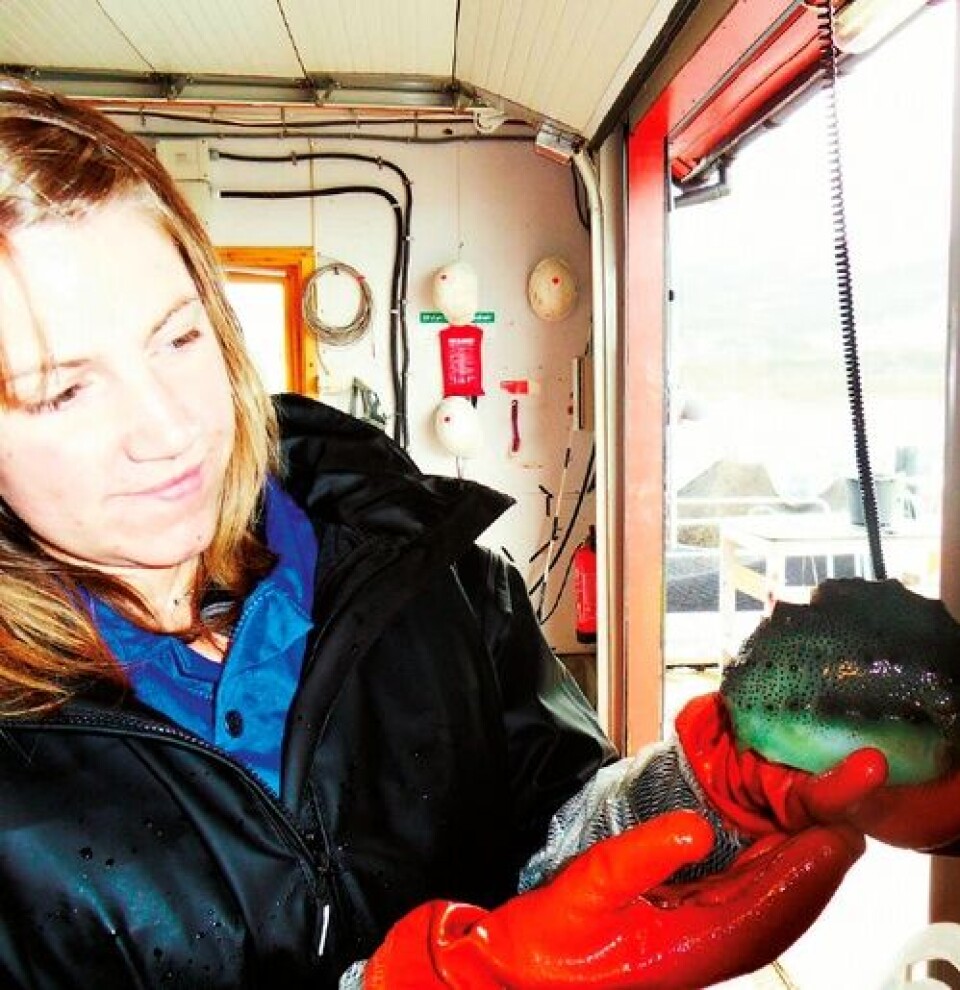
Pre-adult stages of L. salmonis The pre-treatment count for pre adult stages was an average 0.17 per fish. At all sampling points after day 11 both the 10% and 15% stocked cages had lower average numbers of pre-adult stages compared to the control cages. The results from the lice count undertaken at day 11 showed that the counts from the 15% stocked cages (0.17 per fish) were significantly lower compared to the control cages (0.32 per fish). Whilst, the average number of pre-adult lice was found to be higher in the 10% stocked cages (0.37 per fish) compared to the control cages. At day 25, the average number of pre adults and mature male lice per fish was found to be significantly lower in both the 10% and 15% stocked cages (0.96 and 0.73 respectively) compared to the control cages (1.72 per fish). This trend was similar at day 38 and day 54. At day 25 onwards, the 10% stocked cages had between 44.7% and 54.5% less pre adult stages compared to the control cages whilst the 15% stocked cages had between 36.6% and 58% less pre adult lice compared to the control cages.
Mature female stage of L. salmonis The pre-treatment count for mature females displayed an average of 0.07 per fish. At all sampling points from day 25 onwards, both the 10% and the 15% stocked cages had significantly lower average numbers of mature female lice compared to the control cages. At day 54, the 10% and 15% treatments had 93% and 97% fewer female lice compared to the control group. Final sea lice infection levels in the 10% and the 15% group were at pre-treatment level (0.07 and 0.03 for the 10% and 15% groups, respectively), whereas the level in the control group had risen to 1.00 surpassing the set treatment threshold according to Norwegian legislation (0.5 sexually mature females per fish).
Summary/Conclusions The stage composition of the L. salmonis population changed over time with a natural succession from predominantly chalimus to pre- adult to adult lice. At day 11 of the trial period, there were indications that lumpfish were grazing on some of the stages of L. salmonis. As the trial progressed, the evidence became more conclusive. For chalimus stages of L. salmonis, it was not until day 38 and onwards that there were clear differences between the treatments, with both the 10% and 15% stocked cages showing less attached chalimus stages on salmon from these cages compared to the control cages. For pre-adult stages there were significantly fewer attached to Atlantic salmon in cages with lumpfish as compared to the controls. There was clear evidence of grazing from day 11 onwards. The average number of mature female lice remained low throughout the study period for both the 10% and 15% stocked cages. At day 54, the average number of adult female lice per fish had increased to 1 per fish in the control group, whereas the 10% and 15% treatments had 93% and 97% fewer mature female lice present compared to the control. At present, five species of wrasse (family Labridae) have been used as cleaner fish, and stocking densities of approximately 5% have been suggested to provide good results in reducing the number of attached sea lice. In the present trial, 10% and 15% stocking densities produced the same efficiency for pre-adult and female sea lice removal. We suggest that forthcoming trials with lumpfish should focus on testing effect of sea lice infections levels on salmon using a stocking density of lumpfish lower than 10%. Sea lice were actively grazed upon, resulting in lower average numbers per fish of pre-adult and mature females stages of L. salmonis when lumpfish where present in the cages. Lumpfish suppressed the mature female stage of L. salmonis to levels equal to or lower than the pre-treatment count. There were no significant differences between the treatments in grazing efficacy.














